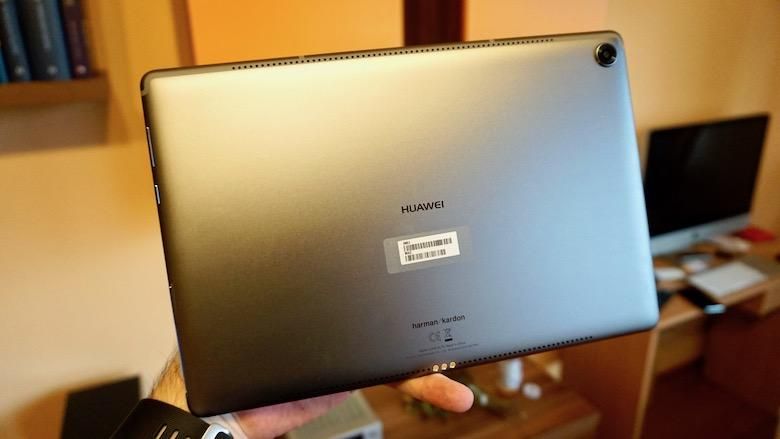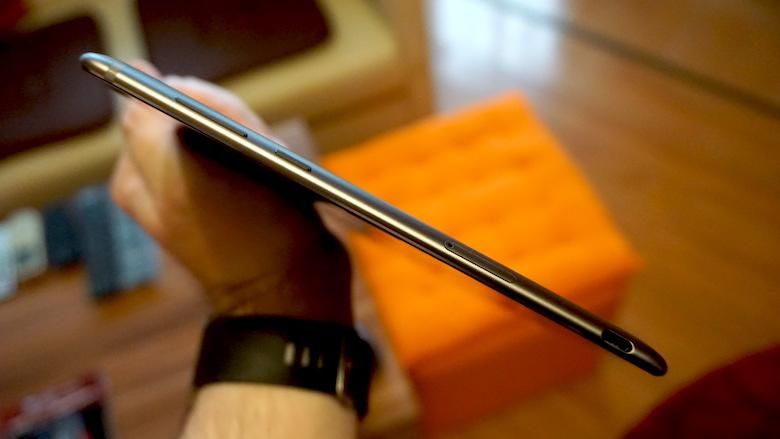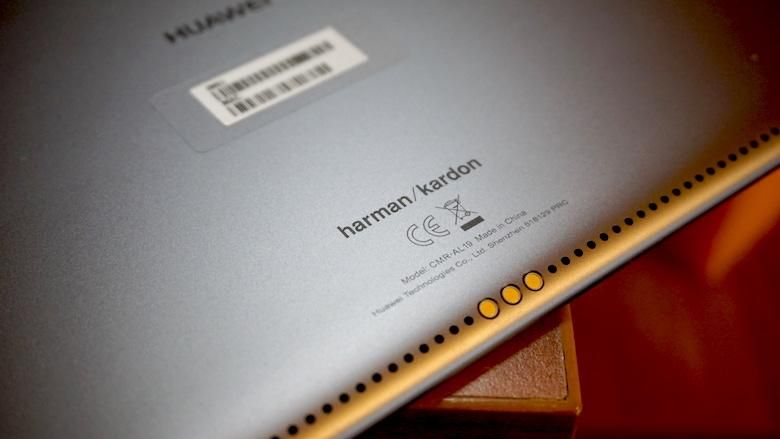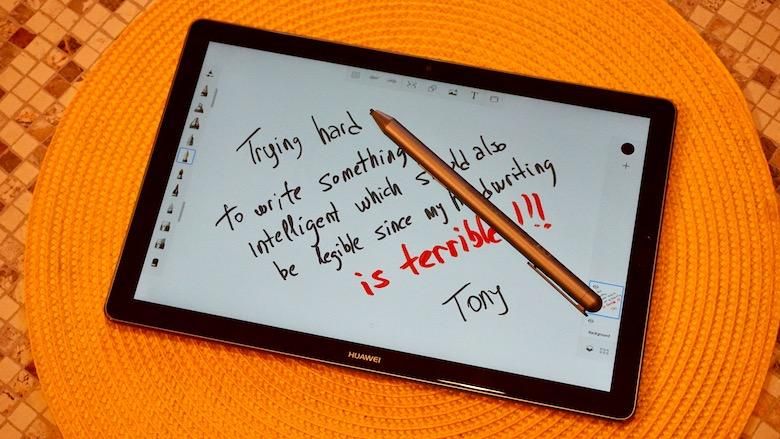This is our full Huawei MediaPad M5 Pro review; we have spent more than two weeks using it.
If you are in the market for a tablet other than the iPad you’ll, probably have a hard time choosing one, despite the fact that there are plenty options out there. However, Android and tablets… well, that was not always a good match. Until more recently, when it finally (with some help from OEMs of course) started delivering a good user experience. Like the Huawei MediaPad M5 Pro here, for instance.
Huawei took its time in announcing the MediaPad M5 duo (trio if you count the Pro we’re reviewing here). From the 2016 IFA, when we saw the MediaPad M3, to the 2018 MWC; 17 months.
This is not Huawei’s first 10-inch tablet. Not by a long shot. But it’s definitely one that can finally take on Apple’s iPad Pro (the 10.5-inch version).
It’s slim, it’s sleek, it’s sexy, it’s fit, and it’s powerful. About the only question that remains is whether it is good enough to become your daily driver, your go-to tablet, your mobile lightweight office. We’re trying to answer that, and more, in our full Huawei MediaPad M5 Pro review below.
Hardware
The MediaPad M5 Pro comes with an M-Pen, one Huawei is calling “ultra precise”. It’s about the only thing that sets the tablet apart from the non-Pro version. It features 4,096 levels of pressure sensitivity and it comes bundled with the tablet, inside the box. A keyboard dock is also available. However, you’ll have to purchase that separately when it will become available. It’s not included. It connects to the tablet via the pogo pins on the bottom. We didn’t have one at the time of publishing this review. We’ll update accordingly when we get one, if needed.
The company took its time in building the MediaPad M5 Pro, and they did a great job. From the design to the metal uni-body, all the way to the U-shaped antenna placement (for the 4G/LTE version), everything pleases your senses when looking at, or holding the slate.
Our review unit is Space Gray, but a Champagne Gold version is also available, one that has white front panel bezels (opposed to the black ones on the gray version).
Despite being a 10.8-inch tablet, it is pleasantly lightweight at 498 grams (1.10lbs). It’s not as thin as the iPad Pro, but at 7.3mm (0.29 in) it is still a thin tablet. The placement of the fingerprint scanner hints towards a portrait-intended design, but it looks and operates just as well in landscape. 258.7 x 171.8mm (10.19 x 6.76in) are the measurements. Whether you hold it landscape or portrait is up to you (and the apps you’re using). For these numbers, the screen to body ratio is one of 76%.
A 2.5D glass that tapers towards the edges covers the 10.8-inch screen, one that Huawei marketing refers to as “2K HD, ClariVu 5.0-enhanced display”. In other words, it’s a 16:10 aspect ratio IPS display with a resolution of 2560 x 1600 pixels and 280ppi.
Despite being an IPS unit it offers surprisingly good black levels and contrast. It is not one of the brightest screens we’ve ever seen, but you should be good in most scenarios. As a matter of fact, the reflective glass –which is too reflective in our opinion– will probably bother you more. Color reproduction is good, with popping, but pleasant shades, which seem accurate and true-to-life enough to the layman’s eye.
In addition to the screen and the fingerprint scanner, the front also holds the webcam: an eight-megapixel shooter for your video chat and conference needs. Of course you can take a selfie with your tablet, but you’ll be that person.
A 13MP camera without LED flash resides on the back, and it’s decent enough to capture something if you really need to. For anything remotely closer to serious photography (or if you really care about your memories) you might want to use your Mate 10 Pro (or your smartphone/camera of choice).
Inside
…and then we move to the inside. At the heart of the MediaPad M5 Pro lies last year’s octa-core HiSilicon Kirin 960 SoC with the Mali-G71 MP8. This is the same chip that powered the Huawei P10, with its four 2.4GHz Cortex-A73 cores and four 1.8GHz Cortex-A53 cores.
If you’re asking yourself “why last year’s 960 chip from the P10 and not the 970 from the Mate 10?”, don’t. Most of the novelty brought by the 970 is built around the Neural Network Processing Unit responsible for AI. There’s a performance bump as well but you won’t feel it in real life, and the MediaPad M5 Pro doesn’t bring anything AI-related to the table. You’re fine with the Kirin 960! They also wanted to probably keep the costs down (lower).
Pair that with 4GB of RAM and a not-too-heavy-not-too-vanilla user interface, and you’ve got yourself a really, really fluid user experience. Our review unit comes with 64GB of internal storage and a microSD card slot for adding 256GB more.
If you’re concerned about battery life, don’t be! We simply couldn’t kill the 7,500mAh battery. We tried. Huawei’s QuickCharge technology works in your favor, but given the rather large size of the battery, you’ll be better off charging the tablet overnight.
And last, but should be really first: the speakers! Ohhh, those speakers! Four, in total, and the “Harman/Kardon” and “Hi-Res Audio” branding on both the tablet and the box are not just there to add another label. The only concern we had (that was before actually listening to how they sound) was related to the placement: the speakers are back-firing. Don’t worry. They’re loud, they’re clear, they pack oomph and dynamic range. They sound better than anything we’ve heard on a portable device, be it smartphone, tablet, or laptop.
I am not a die-hard fan of the 3.5mm headphone jack. I am also not against using a headphone dongle. I’m ambivalent towards the topic, and I was among the first ones who understood the “space constraint” reasons that kicked off the “removal of the jack trend” on phones. But this is a tablet, and no tablet or laptop should go without the 3.5mm headphone jack. Why? Because you have the space, and because you need to offer the option. Let users decide whether they want to use it or not, instead of just taking it away. There’s no excuse for not being there on the MediaPad M5 Pro, regardless of how good its Harman/Kardon speakers are.
Software
There’s a new and interesting debate in the Android world that took me by surprise, personally. I’ve been in the business long enough to see the launch of Android as an alternative operating system to Microsoft’s Windows Mobile. I’ve also experienced, first hand, the clumsy attempts at porting Android to larger screens on tablets with Honeycomb. Between then and now, I’ve seen a lot of complaints about Android being too heavy, bloated, inflated, and slow. For years, Android fans were begging for a vanilla experience, which is what kicked the Nexus line-up pretty much off into the consumer market, not the developer market. Fast forward to today, and this is the new debate I’m talking about: I’m seeing a trend where people start complaining about stock Android being “too stock”, “too vanilla”. Luckily, in the Android world, (almost) anything can be an easy fix.
EMUI 8.0 (based on Android 8.0 Oreo) is the name of the operating system on the MediaPad M5 Pro. It’s not stock, but it’s not bloated either. Definitely not heavy. You’ve got a couple of apps installed out of the box to support the M Pen (nothing serious or super important) but you can easily get rid of them if they’re in your way. Same goes for titles like Booking.com, Instagram, and the likes.
Other than that, if you’ve used a Huawei phone or tablet before, you’ll feel right at home. If you haven’t, don’t worry: the learning curve is almost non-existent.
There’s not much you can customize out of the box, save for some animations, quick toggles, wallpaper, transitions, and a couple of themes to choose from. That should be enough for most, but those who demand more can (and probably will) replace the launcher.
Some apps look good on the large canvas, and some are simply blown-up versions of their phone correspondents. You can blame Google, developers, or even Huawei (depending on the app), but this is what you have to live with. The dialer for instance (in case you get a 4G/LTE version) is ugly as sin.
Performance is, overall, top notch. Whether you use it for work or play (or both), you’ll have to try really hard to slow it down, even if you’re using several apps in the background (which EMUI will eventually close), and pairs side-by-side.
Desktop Mode will turn your tablet’s UI into a familiar computer-like interface, should you opt for the keyboard dock, or an external keyboard and mouse. Not all apps are available or work in this mode, but you can always try to install new ones, if whatever’s available doesn’t satisfy your needs.
Camera (rant)
I never fully understood cameras on tablets. Never used a camera on a tablet. But I’ll never deny anyone the right to use it, regardless of how ridiculous it looks to snap a pic with your tablet, or not. But this brings up a topic that many fail to discuss, and most manufacturers fail to acknowledge: the camera quality on tablets is usually, well, lacking (to put it gently).
Manufacturers have, most of them, by now figured out smartphone photography, and are pushing the software and hardware envelope further and further with every iteration. They have the skills, means, know-how, everything it takes to deliver good camera quality. They just fail to implement those camera systems on tablets. Take the Mate 10 Pro for instance, and its great camera combo, not to mention the P20 that’s around the corner.







